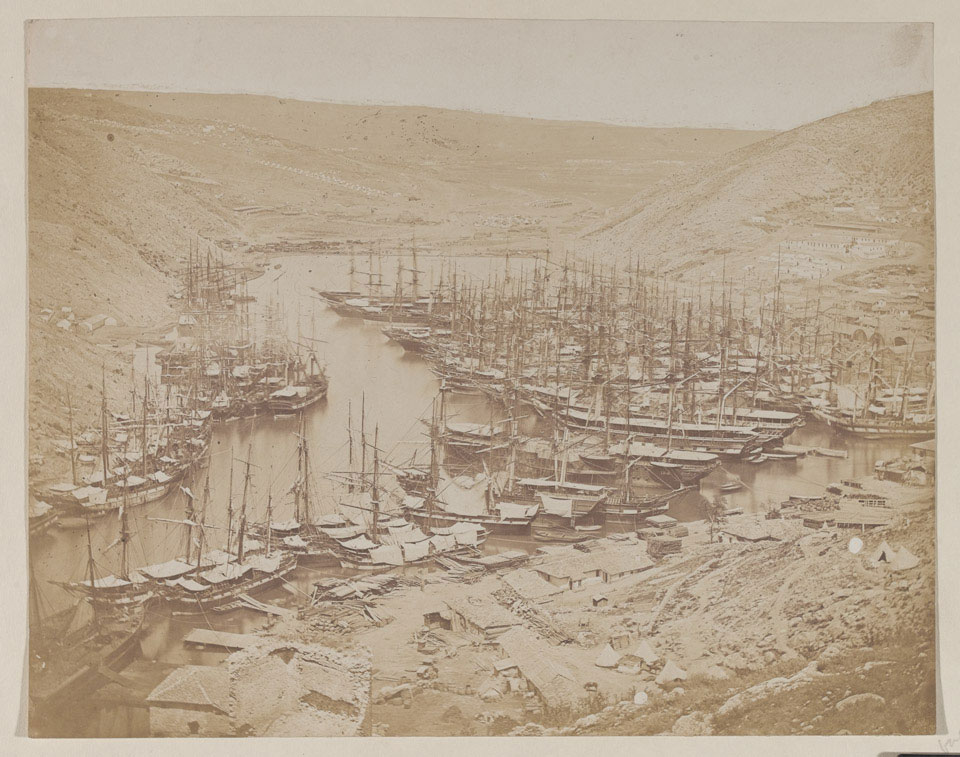
Online Collection
Balaklava Harbour, looking north, 1855 (c)
Photograph by James Robertson (1813-1888), Crimean War, 1855 (c).
James Robertson was employed as superintendent and chief engraver at the Imperial Mint in Constantinople, and was also a well-known and successful amateur photographer, having published in London a number of albums of views such as Constantinople and Athens. Many details of his early life remain unconfirmed, although he is thought to have been born in Middlesex, perhaps of Scottish ancestry, and to have studied at Edinburgh University.
There is evidence that Roberston, who arrived in the Crimea in mid-June 1855, met Roger Fenton (1819-1869) another famous Crimean photographer before he left. Lieutenant-Colonel Colin Frederick Campbell of the 46th (The South Devonshire) Regiment of Foot, wrote of them in a letter to the artist Lowes Dickinson, after the fall of Sevastopol on 8 September 1855:
'Since Mr Fenton was here a man of the name Roberston, who has an establishment in Constantinople, has taken a great many views, superior, I think to Fenton's. He went to Constantinople, about a month ago to have them printed off, and promised to let me have £5 worth, but I have heard no more of them. He had the great advantage of being able to take the interior of the Malakoff, Redan and other places almost immediately after their capture.'
Robertson's first photographs from the Crimea were taken at Scutari between April and June 1854. He photographed the British troops assembled there awaiting orders to sail to Varna, and engravings based on these prints appeared in 'The Illustrated London News' soon afterwards. On arrival in the Crimea, his subjects included panoramas of Sevastopol, encampments, fortifications, trenches, mortar batteries and burial grounds, but it was his depictions of the aftermath of the fall of Sevastopol that made his name.
Throughout 1856 both Robertson and Fenton exhibited their work in London and nationwide, at times as joint exhibitions and on other occasions separately. However after the war drew to a close public interest quickly waned and in December 1856 they jointly auctioned off their unsold stock.
NAM Accession Number
NAM. 1964-08-327-1
Copyright/Ownership
National Army Museum, Out of Copyright
Location
National Army Museum, Study collection
Object URL
https://collection.nam.ac.uk/detail.php?acc=1964-08-327-1

